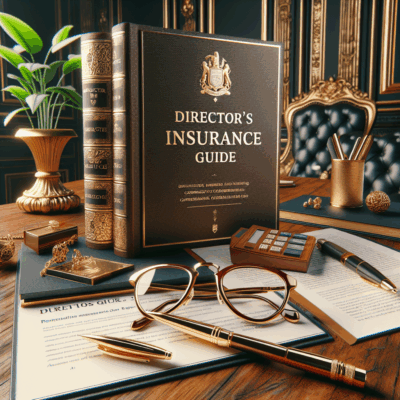Navigating the Boardroom Safely: A Deep Dive into Directors Liability Insurance Alternatives
Serving on a board of directors is a position of immense responsibility, strategic influence, and, unfortunately, significant personal risk. In an increasingly litigious business environment, directors and officers (D&Os) can find themselves personally named in lawsuits alleging mismanagement, breach of fiduciary duty, or failure to comply with complex regulations. For decades, Directors and Officers Liability Insurance (D&O insurance) has been the primary shield protecting the personal assets of these individuals. However, the D&O insurance market is dynamic, with premiums fluctuating, coverage terms tightening, and certain risks becoming harder to insure.
This reality has prompted many organizations and their board members to ask a critical question: what are the viable directors liability insurance alternatives? While a robust D&O policy remains the cornerstone of risk management for directors, a comprehensive strategy often involves a multi-layered approach. Understanding the alternatives, supplements, and strategic financial decisions that can mitigate personal liability is not just prudent; it is essential for attracting and retaining top-tier talent in the boardroom.
This article will provide a detailed exploration of the landscape beyond the traditional D&O policy. We will dissect indemnification agreements, examine various captive insurance structures, delve into the world of risk retention groups, and analyze the critical role of corporate governance. Our goal is to equip you with the knowledge to build a resilient defensive framework for your organization’s leadership.
The Unshakable Foundation: Understanding D&O Insurance
Before we explore alternatives, it’s crucial to understand what we are seeking to supplement or, in rare cases, replace. D&O insurance is a specialized liability coverage that protects the personal assets of corporate directors and officers when they are sued for alleged wrongful acts in managing the company.
A typical D&O policy is structured in three parts, often called “sides”:
- Side A: Covers directors and officers directly when the company cannot indemnify them. This is the core protection for personal assets.
- Side B: Reimburses the corporation when it indemnifies its directors and officers for a loss, protecting the company’s balance sheet.
- Side C: Provides coverage for the corporation itself for securities claims (more common for publicly traded companies).
The limitations that drive the search for alternatives often include:
- Cost: Premiums can be prohibitively expensive, especially for startups, non-profits, or companies in high-risk industries.
- Coverage Gaps: Policies are filled with exclusions (e.g., for fraud, bodily injury, property damage, certain ERISA claims) and may not cover all legal costs or settlements.
- Policy Limits: The maximum amount the insurer will pay. In a major lawsuit, these limits can be exhausted, leaving individuals exposed.
- Deductibles and Retentions: The amount the insured must pay out-of-pocket before coverage kicks in.
- Market Hardness: In a “hard market,” capacity shrinks, underwriters become more selective, and prices rise dramatically.
With this context, let’s examine the strategies and structures that can serve as directors liability insurance alternatives or powerful complements.
Corporate Indemnification: The First Line of Defense
The most fundamental alternative to insurance is a strong corporate indemnification provision. This is a contractual obligation, typica
The Mechanics of Indemnification
State corporate laws, particularly Delaware General Corporation Law §145, provide the legal backbone for indemnification. These statutes permit—and in some cases mandate—that a corporation indemnify its directors and officers for expenses, judgments, fines, and amounts paid in settlement incurred in connection with a legal proceeding, provided they acted in good faith and in a manner they reasonably believed to be in the best interests of the corporation.
A well-drafted indemnification agreement will include:
- Mandatory Indemnification: To the fullest extent permitted by law.
- Advancement of Expenses: The corporation pays legal fees as they are incurred, which is critical as defense costs can mount quickly.
- Procedure for Indemnification: A clear process for making a claim and resolving disputes.
- Non-Exclusivity: Clarifying that the agreement is in addition to any other rights the director may have.
Limitations of Indemnification
Relying solely on indemnification is a high-risk strategy. Its effectiveness is entirely dependent on the financial health of the corporation. If the company is the plaintiff in the lawsuit (e.g., a shareholder derivative suit) or becomes insolvent due to the very event that triggered the lawsuit, the promise of indemnification is worthless. The corporate coffers may be empty, leaving the director personally liable. Therefore, indemnification is a crucial foundation but must be backed by another financial mechanism—most traditionally, D&O insurance.
Captive Insurance: A Sophisticated Self-Insurance Solution
For larger organizations, forming a captive insurance company is a sophisticated and increasingly popular alternative for managing various risks, including D&O liability. A captive is a wholly-owned subsidiary insurer established to provide risk financing for the parent company and its affiliates.
How a D&O Captive Works
Instead of paying premiums to a commercial insurer, the parent company capitalizes its captive and pays premiums to it. The captive then assumes the D&O risk. The captive can:
- Provide Primary Coverage: Act as the first-line insurer for D&O claims.
- Provide Excess Coverage: Cover losses that exceed the limits of a traditional commercial D&O policy.
- Reinsure a Deductible: Cover the retention or deductible of the commercial policy.
Advantages of a Captive
- Cost Control: Premiums are based on the company’s own loss experience, not the broader insurance market’s volatility. Profits, from investing premium income and favorable loss experience, remain within the corporate group.
- Customized Coverage: The captive can be tailored to cover risks that are excluded or too expensive in the traditional market.
- Improved Cash Flow: Premiums are paid to a entity you control, and claim payments can be structured more flexibly.
- Access to Reinsurance Markets: A well-managed captive can access the global reinsurance market to offload catastrophic risk, something an individual company cannot do alone.
Challenges of a Captive
- Setup and Operational Cost: Establishing and running a captive requires significant capital, expertise, and ongoing administrative expense. It is generally only feasible for larger organizations.
- Regulatory Scrutiny: Cap
- Regulatory Compliance: Captives are regulated insurance companies and must comply with all applicable insurance laws and accounting standards.
- Risk of Catastrophic Loss: While reinsurance can mitigate this, the parent company is ultimately on the hook for large losses. It requires a disciplined approach to risk management.
For a multinational or large corporation, a captive is a powerful tool to gain more control over its D&O risk financing, making it a highly recommended strategy for those with the resources to implement it correctly.
Risk Retention Groups (RRGs): The Collective Approach
Risk Retention Groups are another form of alternative insurance structure authorized by the U.S. Liability Risk Retention Act of 1986. An RRG is a member-owned liability insurance company that allows businesses within the same industry or profession to pool their risks.
The RRG Model for D&O
A group of companies, for example, in the healthcare or technology sector, can form an RRG to provide D&O coverage to its members. The RRG is licensed in one state but can operate nationwide, providing a significant administrative advantage.
Advantages of RRGs
- Stability: Because they are owned by their members, RRGs are less susceptible to the pricing cycles of the commercial insurance market. They are formed for the long term.
- Cost Savings: By eliminating the profit motive of a traditional carrier and reducing overhead, RRGs can potentially offer coverage at a lower cost.
- Customized Coverage: Members, who are also the insureds, have a direct say in policy terms, conditions, and exclusions, ensuring the coverage is relevant to their specific industry risks.
- Shared Expertise: An RRG creates a community of practice where members can share risk management strategies and loss prevention techniques.
Disadvantages of RRGs
- Assessment Risk: If the RRG experiences worse-than-expected losses, members can be assessed additional capital to cover the shortfall.
- Limited Diversification: An RRG’s risk pool is concentrated in one industry. A systemic issue affecting the entire industry (e.g., a new regulation) could impact all members simultaneously.
- Formation Complexity: Starting an RRG requires a critical mass of committed members and significant startup capital.
For trade associations or groups of similar companies, forming or joining an RRG can be an excellent directors liability insurance alternative that offers stability and peer-driven coverage.
Entity Coverage and Side A DIC Policies: Filling the Gaps
Sometimes the best “alternative” is not a replacement but a strategic enhancement to a traditional program. Two such enhancements are Entity Coverage and Side A Difference in Conditions (DIC) policies.
Entity Coverage (Side C)
While not an alternative to the core D&O policy, ensuring that the corporation itself is covered for securities claims (for public companies) or, increasingly, for a broader range of claims (for private companies) can protect the company’s balance sheet. This, in turn, ensures that the company remains financially capable of fulfilling its indemnification obligations to its directors and officers.
Side A DIC Insurance
This is a specialized and highly recommended layer of protection. A Side A DIC policy is designed to “drop down” and provide coverage in specific scenarios where the underlying traditional D&O policy fails to respond. It triggers when:
- The underlying D&O policy limits are exhausted.
- The underlying insurer denies coverage for a claim that should be covered (e.g., due to an insurer insolvency)
The Ultimate Alternative: Proactive Corporate Governance
The most powerful and often overlooked “alternative” to insurance is not a financial product at all—it is a relentless commitment to exemplary corporate governance. The best way to avoid a claim is to not give plaintiffs a reason to sue in the first place.
A robust governance framework includes:
- Meticulous Documentation: Thorough minutes of board and committee meetings that demonstrate a thoughtful, informed, and deliberate decision-making process.
- Informed Decision-Making: Ensuring directors have access to all material information and independent expert advice (legal, financial, etc.) before making significant decisions.
- Strict Conflict of Interest Policies: Having and enforcing clear procedures for identifying, disclosing, and managing conflicts of interest.
- Compliance Programs: Implementing and regularly updating effective programs to ensure compliance with all applicable laws and regulations (e.g., antitrust, anti-corruption, environmental).
- Board Education: Ongoing training for directors on their fiduciary duties, emerging risks, and industry-specific challenges.
While strong governance does not eliminate the need for insurance, it significantly reduces the likelihood of a successful lawsuit. It is the most cost-effective risk mitigation strategy available and is universally recommended by legal and insurance professionals.
Conclusion: Building a Multi-Layered Defence
The search for directors liability insurance alternatives is not about finding a single product to replace D&O insurance. Rather, it is about constructing a comprehensive and resilient risk management architecture. For most organizations, the optimal solution is a layered approach:
- Foundation: A strong corporate indemnification agreement, guaranteed by the company’s financial health.
- Primary Shield: A well-structured traditional D&O insurance policy from a reputable carrier, carefully negotiated to minimize exclusions.
- Strategic Enhancements: Exploring options like a captive insurance company or joining an RRG if the organization’s size and risk profile warrant it.
- Safety Net: A Side A DIC policy to protect individuals from catastrophic coverage failures.
- The Bedrock: A pervasive culture of ethical and diligent corporate governance that prevents claims from arising.
There is no one-size-fits-all answer. The right mix of these strategies depends on a company’s size, industry, risk appetite, and financial resources. The most recommended course of action is to engage with experienced legal counsel and a knowledgeable insurance broker who specializes in executive risk. They can conduct a thorough needs analysis and help you design a defense-in-depth strategy that ensures your directors and officers can lead with confidence, secure in the knowledge that their personal assets are protected from the unforeseen perils of the boardroom.
Frequently Asked Questions
Q: What is Directors & Officers (D&O) insurance and why would I need an alternative?
A: D&O insurance protects the personal assets of a company’s directors and officers from lawsuits alleging wrongful acts in managing the business. You might s
Alternatives to D&O Insurance FAQ
eek an alternative if your company is in a high-risk industry, has been denied coverage, finds premiums too expensive, or needs more tailored protection than a standard policy offers.
Q: What are the main alternatives to traditional D&O liability insurance?
A: Key alternatives include Entity Liability Coverage (which protects the company itself), Side-A Only DIC (Difference in Conditions) policies for non-indemnified losses, captive insurance (a form of self-insurance), and exploring robust indemnification clauses in the company’s bylaws or articles of incorporation.
Q: Can stronger corporate indemnification agreements replace D&O insurance?
A: While strengthening indemnification agreements can provide an additional layer of protection by requiring the company to cover a director’s legal costs, it is not a complete replacement. If the company itself becomes insolvent or is the plaintiff in a lawsuit, it cannot provide indemnification, leaving personal assets exposed.
Q: Are there any risks to using an alternative to standard D&O insurance?
A: Yes, the primary risk is potential gaps in coverage. Alternatives may not offer the same breadth of protection, may have different exclusions, or may place the financial burden back on the company (which could fail). It is crucial to have any alternative solution thoroughly reviewed by legal and insurance professionals.
Now you can see the sort of complexitites with alternatives why not talk with the experts who can offer you both comprehensive and competitive directors liability insurance for less. We only need a call to discuss you requirements and you determine if our quote suits you best. Simple.





